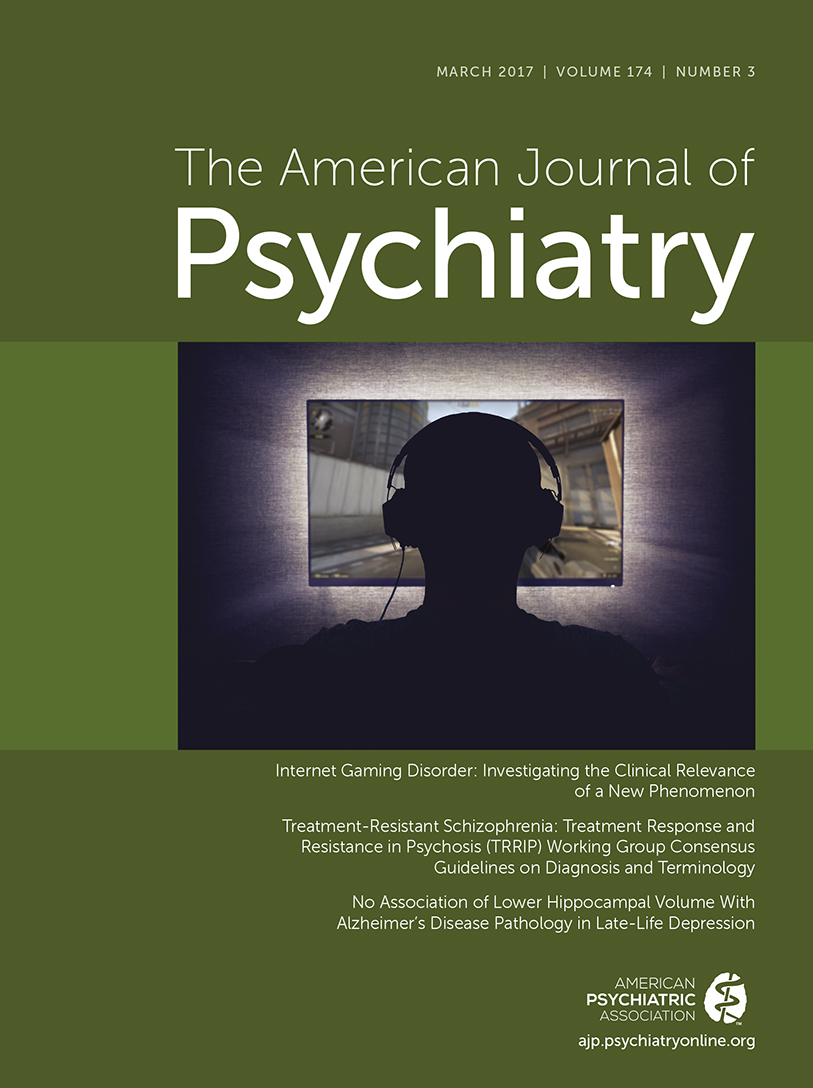Haloperidol-Associated Uterine Dystonia
To the Editor: Haloperidol is a first-generation antipsychotic recommended for psychosis in pregnancy (1). Up to 60% of patients on first-generation antipsychotics develop an acute dystonia (2). Haloperidol could induce uterine or fetal dystonia (3), although this has not been previously reported. We report the case of a pregnant 27-year-old woman who experienced uterine dystonia associated with haloperidol:
A 27-year-old woman presented during her second pregnancy at 25 weeks’ gestation. She had a history of depressive disorder (unspecified) and anxiety disorder (unspecified) and was admitted for depression. At admission she was taking clonazepam only. Clonazepam was discontinued, and on admission day, she was administered 5 mg of haloperidol as needed for anxiety or agitation. Prior to this hospitalization, the patient was antipsychotic-naive and received nine doses over 3 days. On admission day 4, 2 hours after taking haloperidol, she developed cervical and limb dystonia, uterine contractions lasting 30–45 seconds spaced 10 minutes apart, and increased fetal movements. Uterine tone was moderate. Treatment with 2 mg of benztropine partially improved the cervical and limb dystonia; she continued to report contractions. After receiving 50 mg of diphenhydramine and 1 mg of benztropine, she was sent for emergent obstetric evaluation. Her cervical and limb dystonia resolved, contractions continued at the same rate, and increased fetal movements were noted. Contractions stopped 10 hours later; fetal status was reassuring. She was discharged for continued psychiatric management.
Haloperidol is a D2 antagonist associated with adverse obstetric and neonatal outcomes (4) that may potentiate uterine contractility (5). D2 antagonists increase oxytocin release (6), and haloperidol enhances adenosine receptor function during uterine muscle contraction (7). In addition, haloperidol modulates intracellular calcium pathways associated with myometrial contractility (8). Haloperidol crosses the placenta and is detectable in newborns of mothers taking haloperidol (3). Newborns exposed to antipsychotics in the third trimester are at risk for extrapyramidal symptoms (9); similar symptoms could occur in utero. This case illustrates a potential complication of haloperidol with pregnancy and suggests the need for further research regarding this potential side effect.
1 : Management of psychotropic drugs during pregnancy. BMJ 2016; 532:h5918Crossref, Medline, Google Scholar
2 : Acute and subacute drug-induced movement disorders. Parkinsonism Relat Disord 2014; 20(Suppl 1):S108–S112Crossref, Medline, Google Scholar
3 : The measurement of haloperidol and reduced haloperidol in neonatal hair as an index of placental transfer of maternal haloperidol. Ther Drug Monit 1991; 13:183–187Crossref, Medline, Google Scholar
4 : Obstetric and neonatal outcomes after antipsychotic medication exposure in pregnancy. Obstet Gynecol 2015; 125:1224–1235Crossref, Medline, Google Scholar
5 : Understanding spontaneous preterm birth: from underlying mechanisms to predictive and preventive interventions. Reprod Sci 2013; 20:1274–1292Crossref, Medline, Google Scholar
6 : Excitatory and inhibitory dopaminergic regulation of oxytocin secretion in the lactating rat: evidence for respective mediation by D-1 and D-2 dopamine receptor subtypes. Neuroendocrinology 1991; 53:493–502Crossref, Medline, Google Scholar
7 : Receptor crosstalk: haloperidol treatment enhances A(2A) adenosine receptor functioning in a transfected cell model. Purinergic Signal 2010; 6:373–381Crossref, Medline, Google Scholar
8 : The physiological mechanism of uterine contraction with emphasis on calcium ion. Calcium Signal (St Clara) 2014; 1:70–75Google Scholar
9



